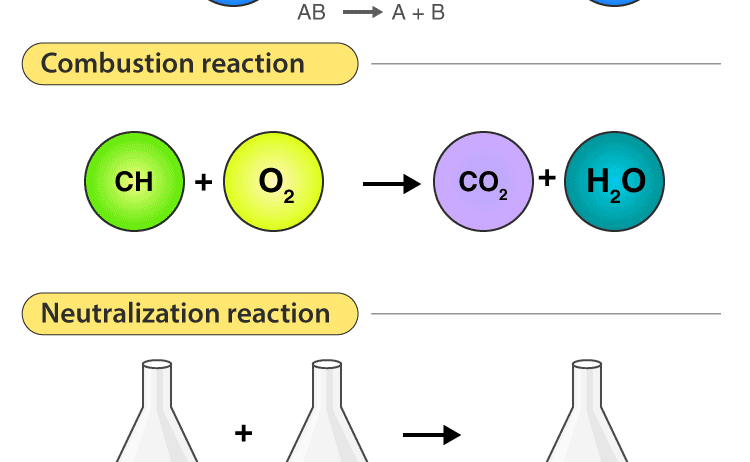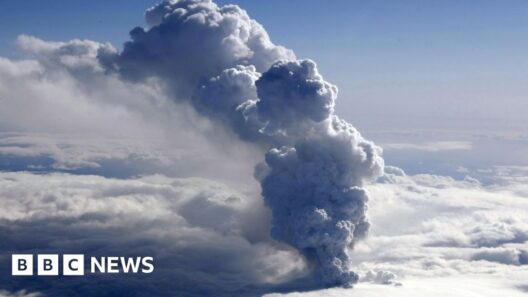In the grand tapestry of our planet’s ecosystem, chemical reactions serve as the unseen threads connecting various elements of the natural world, weaving a complex narrative that shapes our climate. From the bustling biosphere teeming with life to the towering, immobile mountains, the repercussions of these chemical interactions ripple through our atmosphere, dictating weather patterns and influencing global warming. Understanding chemical reactions is akin to deciphering a cryptic code that unlocks the mysteries of our changing climate.
Chemical reactions are ubiquitous; they occur in the blink of an eye or over millennia, shaping our environment’s thermodynamic balance. Broadly classified into synthesis, decomposition, single-replacement, double-replacement, and combustion, these reactions play pivotal roles in both natural processes and human-induced phenomena. Each category of reaction can be likened to a distinct chapter in a novel, where various characters (elements and compounds) meet, interact, and transform, underpinning the escapades of atmospheric chemistry.
One of the most critical interactions influencing climate change is combustion. This reaction, characterized by the rapid combination of a fuel with oxygen, releases energy in the form of heat and light. The flames that flicker in our hearths and the engines that power our vehicles signify just a fraction of this phenomenon. However, the combustion of fossil fuels, a primary driver of anthropogenic greenhouse gas emissions, releases carbon dioxide—an insidious gas that lingers in our atmosphere, capturing heat in a veritable greenhouse effect. This effulgent warmth might seem inviting, yet it mirrors a double-edged sword, swinging dangerously as global temperatures rise.
Moreover, photosynthesis operates as a counterbalance to combustion, showcasing the elegance of natural chemical reactions. In this complex dance, plants convert carbon dioxide and water into glucose and oxygen, with sunlight as the vital catalyst. This process not only sustains plant life but also fortifies the atmosphere with the oxygen necessary for human and animal survival. Yet, deforestation and land-use changes expose a chasm in this natural cycle. Each tree felled is a quiet tragedy, diminishing the planet’s capacity to sequester carbon dioxide and amplifying global warming.
Equally fascinating are the reactions occurring in our oceans, which act as both a carbon sink and a contributor to acidification. When carbon dioxide dissolves in seawater, it reacts with water to form carbonic acid, a compound that lowers the pH of ocean waters. This change in acidity has dire consequences for marine life, especially organisms with calcareous shells, such as corals and mollusks. The metaphorical “canary in the coal mine” of climate change, coral reefs succumb to bleaching, signaling a broader environmental crisis that threatens biodiversity. The confluence of chemical reactions in our oceans serves as a stark reminder of the interconnectedness of earth and atmosphere.
Air quality, too, is inextricably linked to chemical reactions, particularly the formation of secondary pollutants. Ground-level ozone, a significant component of smog, is produced through a series of reactions involving volatile organic compounds (VOCs) and nitrogen oxides in the presence of sunlight. The irony lies in our efforts to mitigate air pollution while inadvertently exacerbating the very conditions that lead to its formation. Urban planning and industrial regulations must adapt, considering the chemical substratum of pollution to pave the way for cleaner air and a healthier climate.
Transitioning to renewable energy sources sheds light on the potential for chemical reactions to serve as climate solutions rather than problems. The burgeoning fields of solar energy and hydrogen fuel cells showcase the power of catalytic reactions. By harnessing the energy from sunlight to drive reactions that split water molecules into hydrogen and oxygen, we can create a sustainable fuel source. This simple yet profound chemical reaction could herald a new age of energy independence and carbon neutrality if scaled effectively.
Moreover, advancements in carbon capture and storage (CCS) technology demonstrate the ingenuity of chemistry in combating climate change. Through chemical reactions, carbon dioxide can be captured from emission sources, stored underground, or transformed into products like fuels or building materials. These innovations reflect an emerging paradigm where chemistry acts as a guardian of the climate, transforming liabilities into assets and offering hope in the fight against global warming.
As stewards of this planet, we must cultivate an appreciation for the chemistry that sustains and threatens our environment. Each chemical reaction reverberates through the fabric of our climate system, influencing everything from local weather patterns to global climate trends. Recognizing the implications of these interactions not only informs our understanding of environmental challenges but also inspires actionable solutions.
In conclusion, as we confront the formidable challenges of climate change, it is essential to recognize the dual nature of chemical reactions. They can be catalysts for destruction, as seen in pollution and greenhouse gas emissions, or agents of rejuvenation, exemplified by photosynthesis and renewable energy innovations. By embracing the complexity of these interactions, we can better navigate the tumultuous waters of climate change and work towards a sustainable, balanced future. As we pull the threads of knowledge and action together, we may yet craft a resilient tapestry that both honors our planet and safeguards its future.






